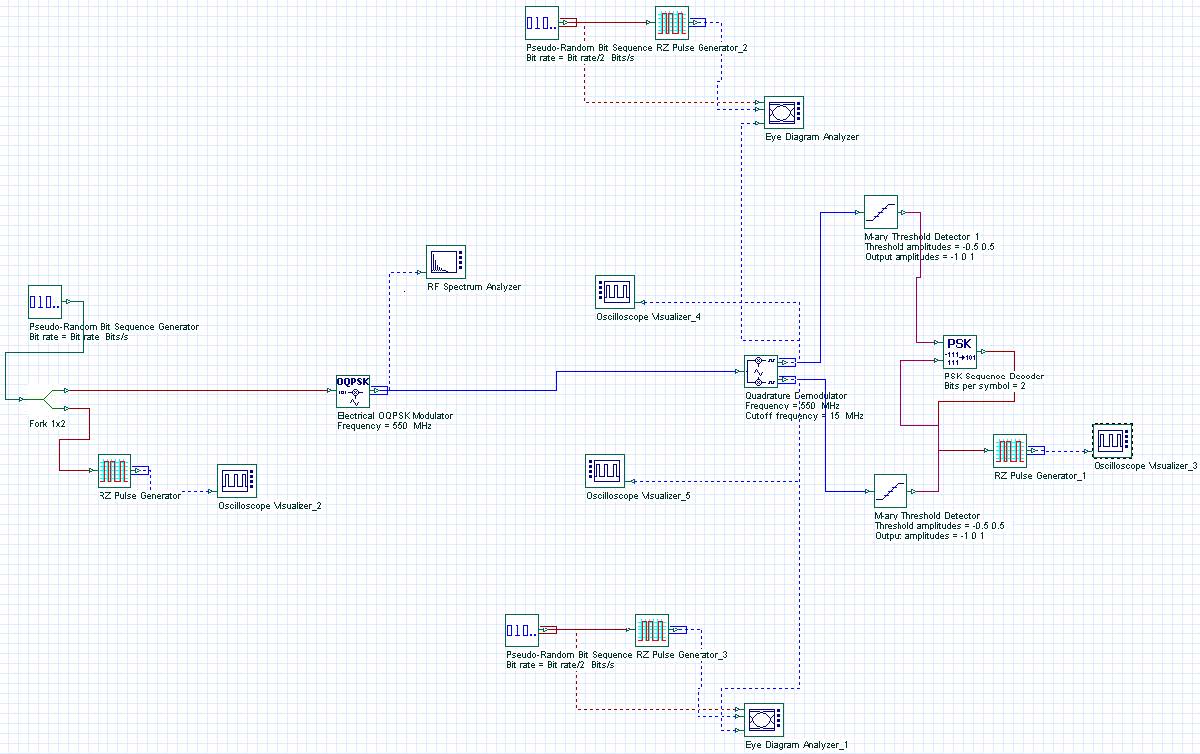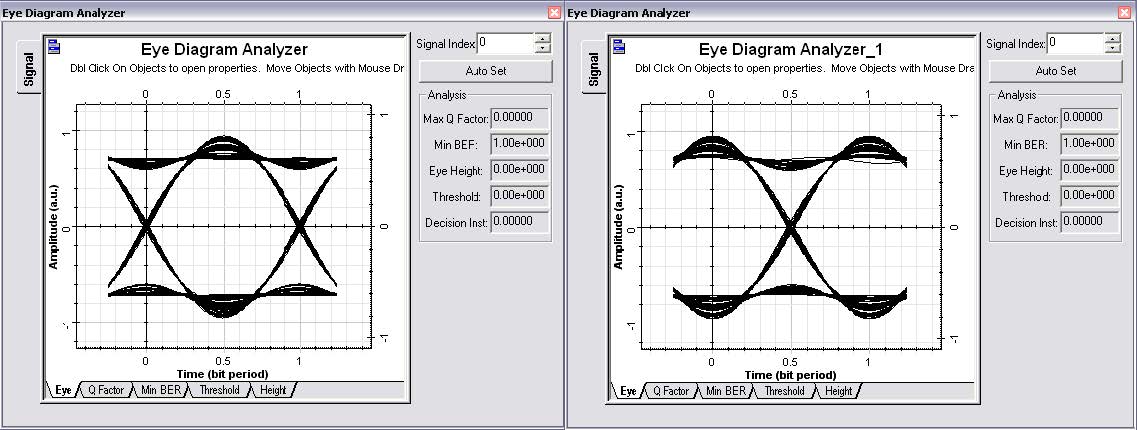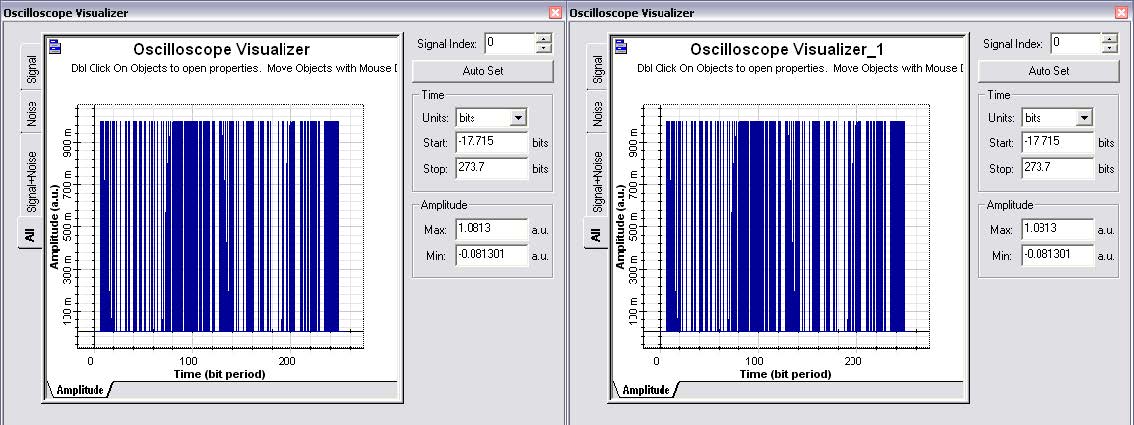The OQPSK modulation is a PSK modulation, using 2 bits per symbol and a delay of one bit in the in quadrature signal (refer to OptiSystem component library, OQPSK Pulse Generator). The project file “OQPSK – Transmitter and Receiver.osd” has an OQPSK transmitter and receiver (Figure 1).
This project was based on the project from Figure 16, but replaces the DPSK modulator with the OQPSK modulator, and the DPSK sequence decoder with the PSK sequence decoder.
Figure 1: OQPSK System
The main difference from the DPSK project is the bits per symbol (2), the threshold and output amplitudes for the detector (-1,0,1) and the decision instant for the in quadrature threshold detector (0.75). The decision instant difference is related to the delay added to the quadrature signal in the transmitter stage.
Simulation Results
After running the simulation you can visualize the results from the Eye diagrams (Figure 2), and also compare the input and output bit sequence (Figure 3). The input and output signals should be the same.
Figure 2: OQPSK Eye diagrams: In-phase and In-quadrature signals
Figure 3: Electrical signals before and after OQPSK coding/decoding




